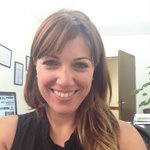אורטיקריה -עקצוצים =עזרה בהולה
דיון מתוך פורום אלרגיה ואסתמה
לפני כ-3/4 חודשים החלו להופיע אצל אישתי התופעות הנ"ל של עקצוצים ונפחיויות למינהם. אציין כי אישתי סובלת גם מאסמה עונתית ולקחת משף לפי הצורך שלה .פנינו לרופא מומחה שנתן לה תרופות שונות בין היתר קיבלה קרטיזרון,טלפסט 180,היסטזין 10 מ"ג, לוראסדין,מיזולן ומישחות למריחה למינהם לטובת הפסקת המצב הנ"ל. לאחר פרק זמן מה פנינו לטיפול אלטרנטיבי שאכן עזר לפרק זמן מה. בשלושה ימיים האחרונים היא סובלת מפריחה בכל גופה, התנפחות שפתיים, מין שלפוחיות שצצות בכל מיני מקומות. כמו כן עשתה בדיקות אלרגיה (טסטים) בא נמצא שהיא אלגרית לדברים מסויימים. שאלתי מה עוד ניתן לעשות כדי להביא לפתרון סופי של המצב הבעייתי הזה.????????? אציין כי זה מלווה בתחושות קשות......ומצב לא נעים. אודה לכה באם תוכל לייעץ מה עוד נית לעשות כדי לעצור את המגפה הנ"ל
צריך כמובן לפנות לרופא אלרגיה ולהתחיל בטיפול בהתאם, אין לי איזה תרופת קסמים שאוכל לתת לכם כאן בפורום. כפי שכבר אתם חווים על בשרכם אין פה פתרון מהיר והתופעה עשוייה להמשך זמן רב ולדרוש טיפולים שונים. צריך סובלנות רבה, ניסיון רב, ובירור מקיף על מנת לאבחן ולטפל.
אורטיקריה ניתנת לטיפול באמצעות שיזוף במנורות UVB שקיימות ברוב בתי החולים. תדפיס לרופא העור שלך את שני המאמרים הבאים, ותשאל אותו לדעתו. Ultraviolet light therapy in chronic urticaria. Hannuksela M, Kokkonen EL Acta Derm Venereol. 1985;65(5):449-50. Fifteen patients with chronic urticaria were treated with ultraviolet light B (UVB) for 1-3 months during the spring 1984 and a follow-up study was performed in November 1984-January 1985. Patients with cold urticaria, cholinergic urticaria and dermographism became clearly better or got rid of their symptoms more often than those with "non-specific" chronic urticaria. The good results achieved during the phototherapy held during the summer but in the autumn urticaria became worse in one third of the cases. The result suggests that UV-therapy might be worth trying in many patients with chronic urticaria. Narrow-band UVB (TL-01) phototherapy: an effective preventative treatment for the photodermatoses. Collins P, Ferguson J. Department of Dermatology, Ninewells Hospital and Medical School, Dundee, U.K. Br J Dermatol. 1995 Jun;132(6):956-63. Twenty patients with photodermatoses [actinic prurigo (n = 6), hydroa vacciniforme (n = 4), idiopathic solar urticaria (n = 1), amiodarone-induced photosensitivity (n = 1) and a range of cutaneous porphyrias (n = 8)] were treated with a 'hardening' course of narrow-band ultraviolet B (TL-01) phototherapy in springtime. The response to phototherapy was monitored subjectively, by interviewing patients after the summer, and objectively by monochromator phototesting, before and after phototherapy. Fifteen patients reported that treatment was worthwhile. Monochromator phototesting after phototherapy revealed a fourfold increase in the minimal erythema dose in those with abnormal photosensitivity to ultraviolet A wavebands. Adverse effects included erythema (seven patients), pruritus (five) and provocation of the eruption (four). We now routinely consider narrow-band UVB phototherapy for problem photodermatoses.

